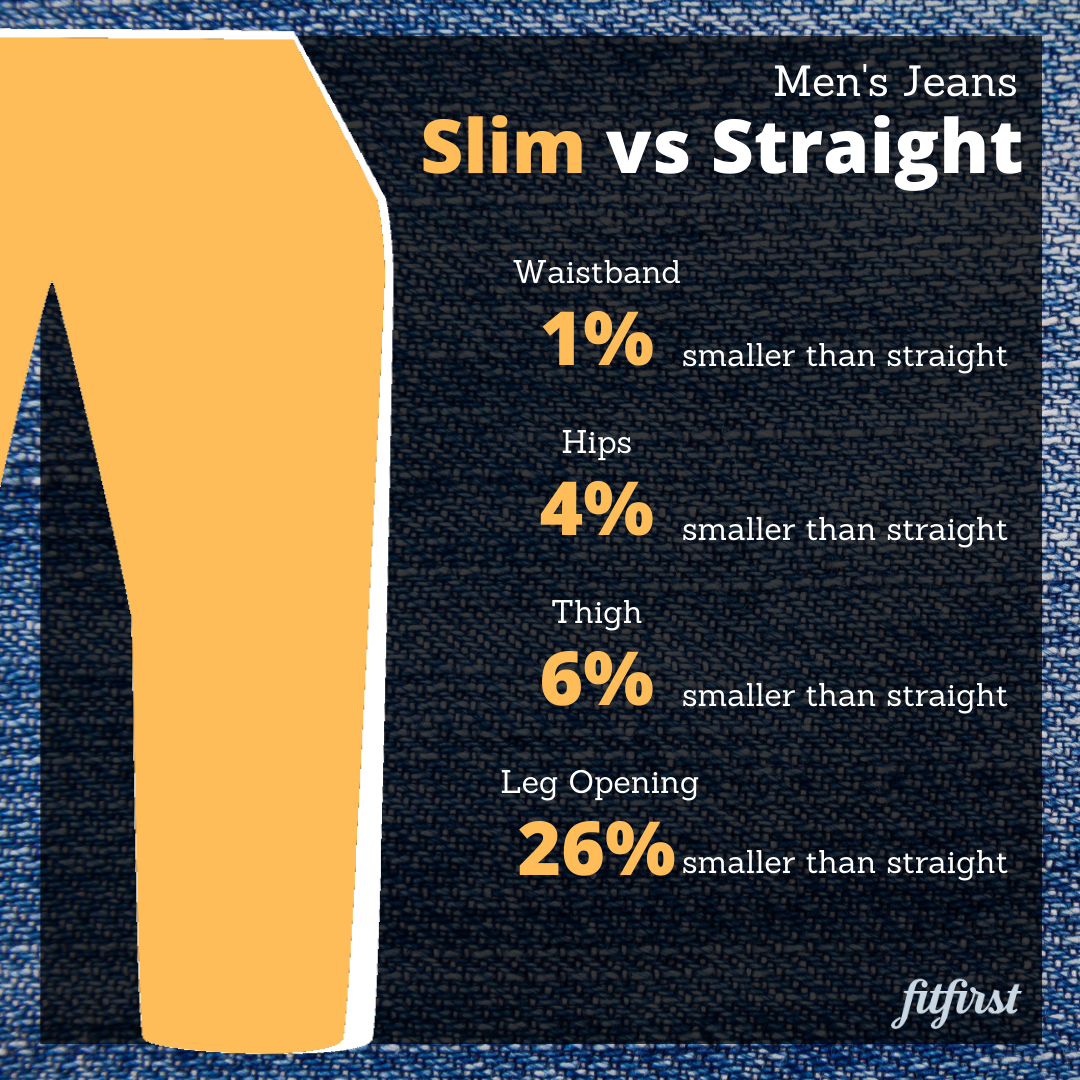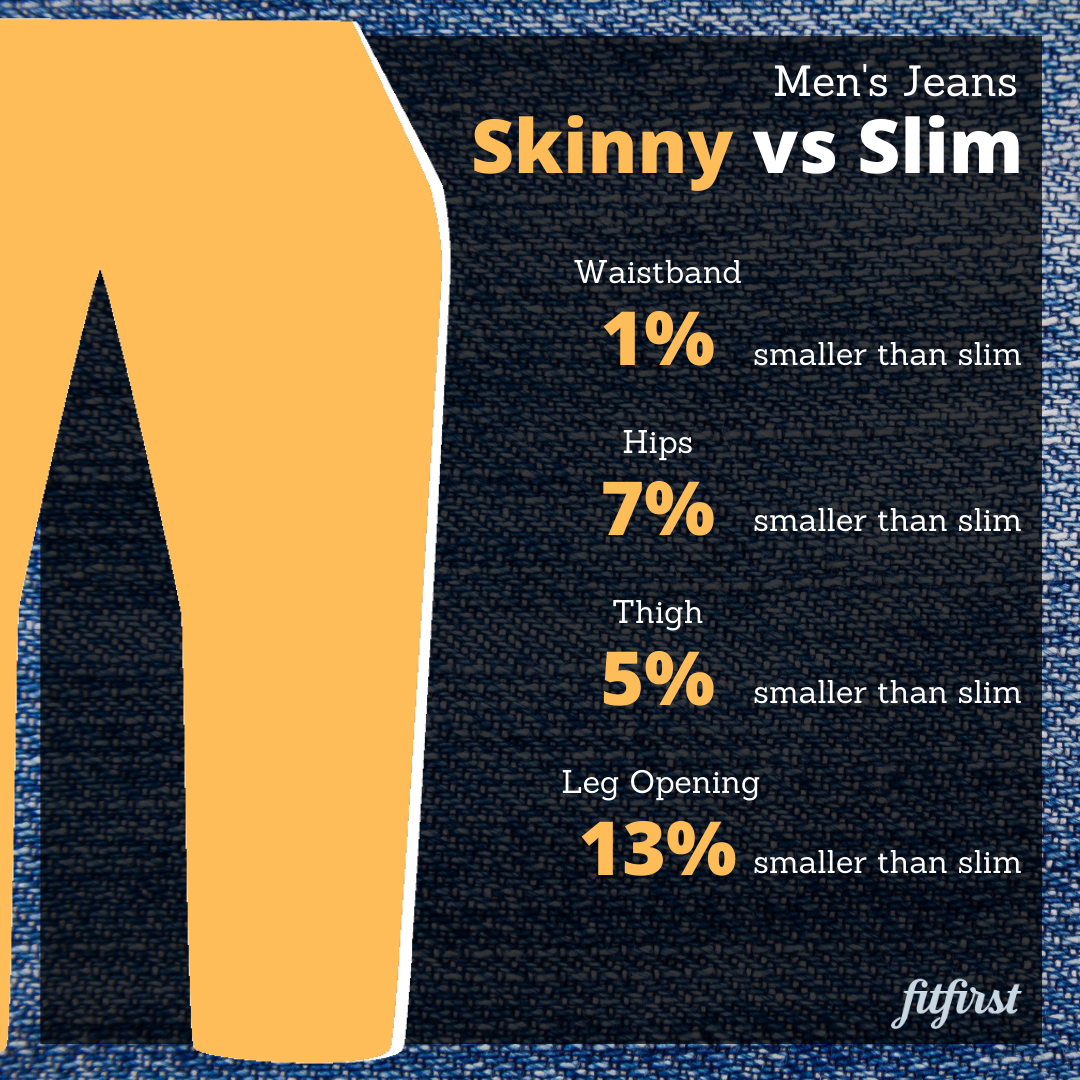What's the Difference Between Slim Fit and Straight Fit?
I used to feel like pant shopping was impossible. Words like slim fit and straight fit perplexed me. Whenever I dug into the lingo, I never found satisfying answers.
I’ve never been big on marketing terms. I’m a scientist. I don’t like buzzwords. I like facts and numbers.
I was tired of guessing what all the pant fits — like slim fit and straight fit — meant. Instead of guessing, my partner and I decided to do what we knew best. We started turning pant shopping into a science.
Why guess what makes a pant slim fit or straight fit when we could find out using data? We’ve personally measured over a thousand pairs of pants to figure out what slim fit and straight fit mean. We’ve spent the past few weeks crunching the numbers.
What did we learn? The fashion industry doesn’t know what slim fit or straight fit actually mean. We found that
Slim fit and Straight fit can mean many things. Slim fit is supposed to tell you how pants fit around the hips and thighs, but brands also use it to describe leg width. Straight fit is supposed to tell you the shape of the knee and leg opening, but brands also use it to describe the shape of the thigh.
Pants aren’t just slim fit or straight fit. For example, pants can be slim straight fit. That’s both slim fit and straight fit at the same time.
The big difference between slim fit and straight fit is in the leg opening. Every slim fit jean we measured had a smaller leg opening than every straight fit. On average, the leg opening is 27% bigger on a straight fit compared to slim.
What do the different pant fits mean?
Fit labels like slim fit or straight fit communicate pant width. There are two spots that affect pant width:
The seat. This is the area that covers your butt and extends down to the thighs.
The leg. This is the area from the thigh opening through the leg opening.
Brands offer different fits to accommodate different customer body shapes and tastes. That’s because not all customers with the same waist size have the same thigh size. More importantly, some customers like looser or tighter fits than others.
It’s not always clear what a pant fit means. Why? Some terms describe the width of the leg, while others describe the width of the seat. What’s worse, some terms can describe the leg width or the seat width.
Generally, brands use four terms to describe seat width:
Skinny Fit. Skinny fit jeans have the narrowest seat that a brand offers.
Slim Fit. Slim fit pants have a seat that’s narrower than a traditional jean fit. Within a brand, slim fit is never narrower than skinny fit in the seat.
Regular Fit. This is the traditional width for a jean seat. Regular fit pants are supposed to leave 2” to 3” between your hips and the pants. You’ll also see regular fit called “classic fit” or “original fit”
Relaxed Fit. This is the baggiest seat width a brand makes. It’s also called “loose fit” by some brands
There’s also three main fits that describe the leg shape:
Taper Fit. Taper fit pants have a knee measurement that’s bigger than the leg opening measurement.
Straight Fit. Straight fit pants have a knee measurement that’s about the same size as the leg opening measurement.
Bootcut Fit. Bootcut jeans have a knee measurement that’s smaller than the leg opening measurement.
We’d be done writing this article if pant fits were that simple! To complicate everything, there are also crossover fits. That is, terms that could describe either the seat width or leg width or the seat width and leg width.
Slim fit, skinny fit, straight fit, and relaxed fit are all crossover terms. We’ve seen brands use them to describe seat width, leg width, and both at the same time.
For instance, slim fit sometimes describes the width of the leg opening in addition to the width of the seat. Levi’s does this on their website. Their product page for the Levi’s 511 describes the seat and leg both as “slim”. Brands like Levi’s also use skinny and relaxed to describe leg widths too, even though the terms technically apply to pant seats.
The same goes for straight fit. Levi’s is a good example here too. Sometimes, Levi’s describes their seats as straight fit. That’s what they do on the men’s jean category page on their website. On product pages, like for Levi’s 501 or Levi’s 505 they use regular fit or extra room to describe the same seat shape.
(Note: we’ve linked to Amazon product pages for your convenience)
Pants can be slim, straight, or both
Slim fit and straight fit are crossover terms. That means they can be mixed and matched. Why do brands mix and match them? For two reasons:
Style. Sometimes, combining a wider leg opening with a smaller seat can be a stylistic choice. Flared jeans are a great example.
Body Shape. Other times, jeans are designed for a particular body shape. For example, athletic jeans have bigger than average thighs, which is perfect for people who squat and deadlift.
Because slim fit is a crossover fit, slim jeans can have any leg shape. Every slim fit we measured that wasn’t also labeled straight fit had a more tapered leg compared to every straight fit. We measured the average difference between the knee and leg opening measurements on a slim fit to be 2.1”. Compare that to straight fit, which we measured to be 1.1”.
Likewise, because straight fit is a crossover term, straight jeans can have many different seat widths. Most men’s straight fit jeans have regular fit seat width, according to brands’ websites. Typically, men’s jeans usually have extra labels if the seat isn’t regular but the leg is straight, like Levi’s 569 Loose Straight Fit.
Some brands combine the labels to make slim straight fit pants. Slim straight jeans like Joe’s the Brixton have become popular in recent years. What makes them different? We found that the leg taper is somewhere between a slim fit and straight fit. The average difference between the knee and leg opening for slim straight fit was 1.9” — not quite straight, but not quite slim.
You can't compare slim fit or straight fit from different brands
Every brand shapes their pants differently. They do this because they’re selling to different types of customers. In our post on slim fit versus skinny fit, we showed that one brand’s slim fit might fit like another brand’s skinny fit.
We found something similar for straight fit versus slim fit. One brand’s straight fit might be as tapered through the leg as another brand’s slim. For example, Old Navy Ultimate Slim has a 1” difference between the knee and leg opening. Contrast that with Wrangler Regular Fit. It has a straight leg but has a 2” difference between the leg opening and knee.
Words like slim or straight are supposed to help you understand how a single brand’s pant lines compare to each other. They don’t help you compare across brands.
We did find that on average, a slim fit is usually narrower than a straight fit in every dimension. Below we’ve drawn an average straight fit on top of an average slim fit.
Average Straight Fit vs — Average Slim Fit
The hips, thighs, and knees are 0.6” bigger on an average straight versus an average slim. So, if you pull a straight jean off a shelf, chances are it is a bit wider than a slim jean.
The real difference between slim fit and straight fit
The only consistent difference between straight fit and slim fit across all brands is in the leg opening. The leg opening on all slim jeans we measured were smaller than the leg opening on all the straight jeans.
The biggest leg opening on a slim jean that wasn’t straight fit is from Gap Slim, measuring at 15” on a size 32. Compare that to Kato “The Hammer”, which had the smallest leg opening on a straight jean that wasn’t slim. It measured at 16”.
Kato "The Hammer" Straight 4-way Stretch vs — Gap Slim
As we suspected, we found that slim straight fit pants are right in between. They have a leg opening that’s bigger than a slim but smaller than a straight. On average, here’s the leg openings we found on size 32 jeans
Slim fit: 14.2” average leg opening
Slim Straight fit: 14.9” average leg opening
Straight fit: 16” average leg opening
What’s interesting is we found the same thing in our post on slim fit versus skinny fit. The biggest difference between slim fit and skinny jeans is the leg opening. Otherwise, the jeans are pretty similar.
Should you buy slim fit or straight fit?
If all you care about is how big the leg opening is on your pants, then there’s a clear answer. Buy a straight fit if you want more room and a slim fit if you want less.
If instead you care about how much room the pants have around your thighs and hips, the answer depends on the brand. Every brand makes pants that are shaped differently because they’re making their clothes for customers with different shapes and tastes.
Don’t focus too much on the label: it’s more important to find a brand that makes pants you feel comfortable wearing. Two shoppers with the exact same body shapes might feel differently in the same pair of pants because they want more or less room in places like the thighs or calves. That means we can’t give you a definitive answer to the slim fit versus straight fit question.
The best way to know which pants to buy is to compare their fit everywhere. That means forgetting the label and directly comparing how much room there is in the seat and leg.
How do you do that? Be on the lookout in the upcoming weeks. We’re about to release our pant comparison tool. You’ll be able to compare a pant you wear to any other pant we’ve measured. Leave your email below so we can let you know when it launches.





